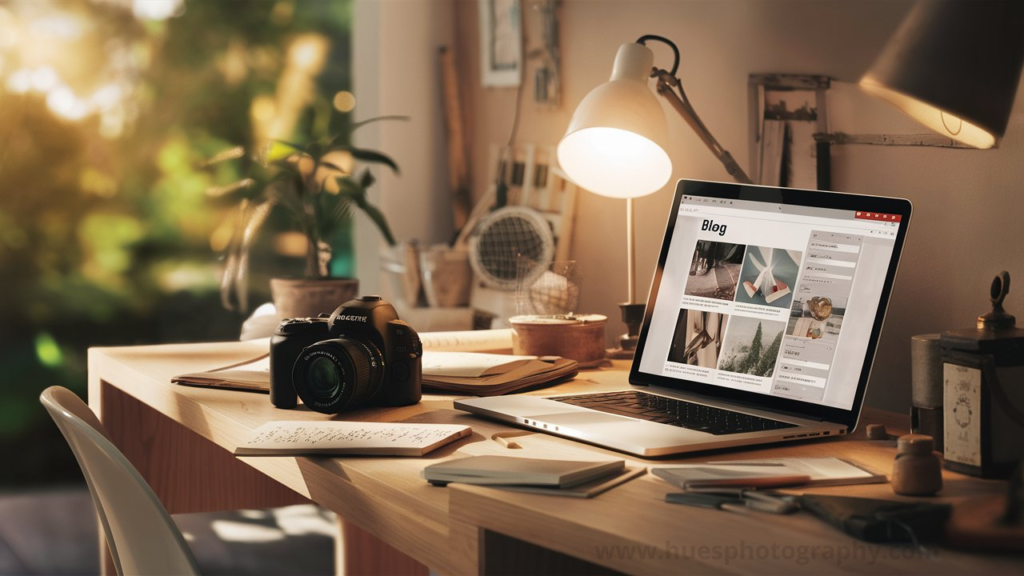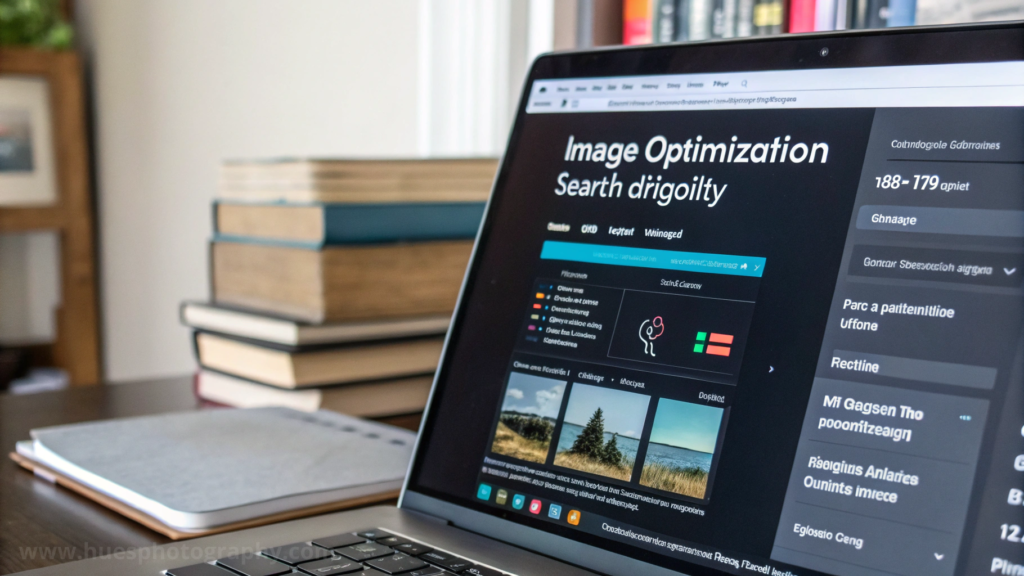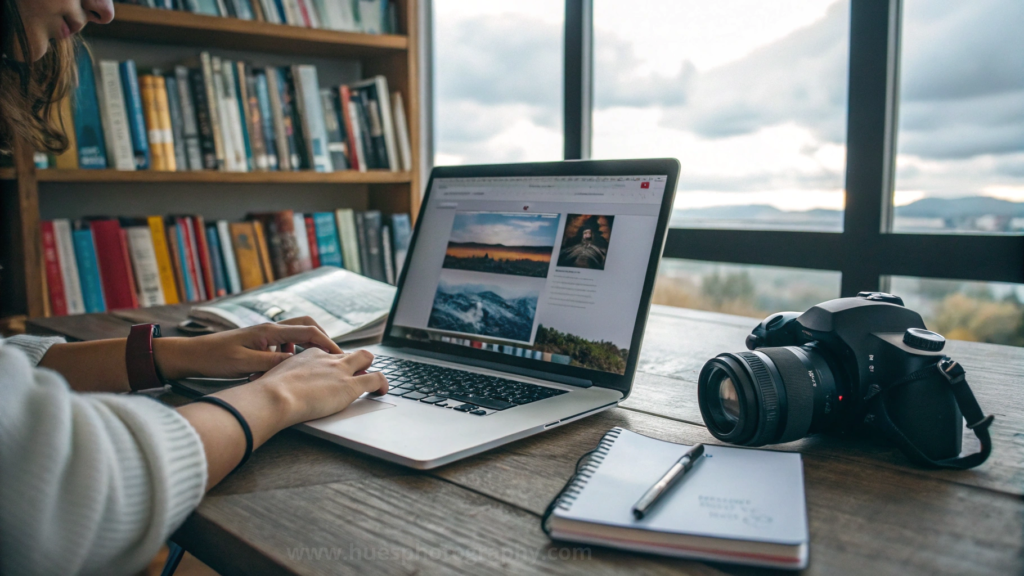In today’s world, where visual storytelling has taken center stage, a photography blog is one of the most impactful ways to share your work. Whether you’re an aspiring photographer or an experienced pro, starting a photography blog can help you build an online portfolio, connect with a global audience, and even generate income. But how do you begin? Let’s dive into the step-by-step process of starting a photography blog that stands out.
Understanding the Purpose of Your Photography Blog
Before diving into the technical aspects of setting up your photography blog, it’s essential to have a clear understanding of its purpose. This foundational step will guide your content creation, design choices, and overall strategy. Ask yourself some key questions to ensure that your blog aligns with your goals and audience expectations. Ready to Start a Photography Blog? Let’s begin!
Why Are You Starting a Photography Blog?
Identifying your primary motivation for starting the blog is crucial. This purpose will shape the tone, content, and focus of your blog. Here are some common reasons photographers start blogs:
- Showcasing Your Work: Many photographers start blogs to create an online portfolio where they can display their best photos. A blog allows you to show off not just your images but also the story behind them, which adds depth to your portfolio.
- Documenting Your Journey: You might want to use your blog as a way to document your growth as a photographer. Sharing your progress, challenges, and successes can be a great way to connect with readers who are on a similar journey.
- Building a Personal Brand: A photography blog can help you establish yourself as an authority or thought leader in the industry. By sharing insights, tips, or expertise, you can build a personal brand that attracts opportunities such as speaking engagements, partnerships, or even new clients.
- Educating Others: If you’re passionate about teaching, your blog can be a platform for sharing photography tips, tutorials, and insights. Many photographers build a following by offering valuable educational content for beginners or those looking to improve their skills.
- Generating Income: Some bloggers aim to monetize their photography blogs through affiliate marketing, ad revenue, or selling digital products like photo editing presets or e-books. Setting this as a goal can guide your content towards topics that attract traffic and engagement.
Who Is Your Target Audience?
It’s crucial to understand your target audience to create content that resonates with them. Ask yourself who you want to reach with your blog:
- Fellow Photographers: If your target audience is made up of photographers at various skill levels, you’ll want to create educational content, gear reviews, and technique tutorials that address their needs and challenges.
- Clients or Potential Customers: If you’re a professional photographer aiming to attract clients, your blog should showcase your work, demonstrate your expertise, and provide insights into your process. Testimonials and success stories can be effective in establishing trust.
- General Photography Enthusiasts: Some bloggers target a broader audience of photography lovers who enjoy consuming visually appealing content. In this case, your blog might focus on inspiring photography stories, beautiful travel imagery, or behind-the-scenes content from shoots.
Setting Clear Objectives for Your Blog
Once you’ve clarified the purpose of your photography blog, it’s essential to set specific objectives that will guide your actions. These can include:
- Increasing Your Online Presence: If your goal is to establish a solid online presence, focus on SEO, social media promotion, and collaborations that will grow your audience and visibility.
- Building an Online Portfolio: If your main objective is to showcase your work, concentrate on high-quality image galleries, detailed posts about each project, and a clean, professional design that puts your photos front and center.
- Educating and Inspiring Your Readers: If teaching is your priority, create a content strategy around photography tutorials, gear recommendations, and photography challenges that encourage readers to engage and improve their skills.
- Monetizing Your Blog: If your goal is to earn money from your blog, make sure you include monetization strategies such as affiliate marketing, ads, or selling digital products (e.g., Lightroom presets, and e-books). Your content should naturally incorporate opportunities to promote these offers.
Setting Up Your Photography Blog

Choosing the Right Blogging Platform
The first technical step in starting your photography blog is choosing a platform. The most popular choices for photographers are WordPress, Squarespace, and Wix. WordPress, in particular, stands out because of its flexibility and the range of themes and plugins that make customization easy.
Selecting a Domain Name and Hosting Service
Start a Photography Blog by first choosing a domain name – your blog’s address on the internet. Make it catchy, memorable, and reflective of your brand. Once you’ve decided on a name, you’ll need a reliable hosting service to ensure that your site runs smoothly. Bluehost, SiteGround, and HostGator are popular hosting providers with packages designed for beginners.
Understanding the Basics of Website Setup
Once you’ve chosen a platform, domain, and hosting service, it’s time to set up your site. Choose a theme that complements your photography style – minimalist themes often work best as they let your images shine. Additionally, install necessary plugins for SEO, security, and performance optimization, such as Yoast SEO and WP Rocket.
Finding a Niche in Photography Blogging
Photography is a broad field, so narrowing your focus can help you attract a specific audience.
General Photography vs. Niche Photography
Decide whether your blog will cover all aspects of photography or focus on a specific niche. Some popular niches include:
- Travel Photography: Sharing landscapes, culture, and experiences from different parts of the world.
- Wedding Photography: Tips and stories about capturing one of life’s most special moments.
- Wildlife Photography: Showcasing rare animals and environmental issues.
Choosing a niche can make your blog more attractive to a target audience and help improve your SEO ranking by focusing on specific, relevant keywords.
Creating a Content Strategy for Your Photography Blog
Developing Content Ideas and Planning
Content is king, even in photography blogging. A carefully planned content strategy is essential for achieving success. Plan your posts and keep a running list of topics. You could write about your favorite photography gear, tutorials, or the stories behind some of your favorite shots.
Frequency of Posting: What Works Best?
Consistency is more important than frequency. Some photographers post once a week, while others might only publish once a month. Establish a schedule that suits you and remain consistent with it.
Balancing Photography Tips With Personal Stories
A good photography blog mixes helpful information with personal insight. Share tips about photography techniques, but also engage your readers by telling the story behind a photo. Why was this shot meaningful? What challenges did you face while capturing it?
Writing Engaging Blog Posts

The Importance of a Catchy Headline
First impressions matter. A headline should grab attention while accurately describing the content. For example, “10 Tips for Stunning Night Sky Photography” is more engaging than “How to Photograph the Sky.”
Structuring Your Blog Post for Readability
Use short paragraphs, bullet points, and subheadings to divide the text. Readers are more likely to stay on your blog if it’s easy to navigate.
SEO Strategies for a Successful Photography Blog
SEO (Search Engine Optimization) is essential for getting your blog seen by the right audience.
Importance of Keyword Research
Before writing any post, conduct keyword research. Tools like Google Keyword Planner and Ubersuggest can help you find what people are searching for in your niche, such as “best camera settings for wildlife photography” or “how to take portraits with natural light.” This is especially crucial if you’re planning to Start a Photography Blog and want to attract organic traffic from search engines.
On-Page SEO Tips
Ensure your blog is optimized with:
- Meta descriptions: Summarize the content of your post in a way that encourages clicks.
- Alt tags for images: Describe your images in a way that search engines can understand.
- Internal linking: Connect your posts with relevant links to keep readers on your site longer.
Optimizing Images for SEO

Image optimization is crucial for a photography blog, where high-quality visuals are the focus.
Best Practices for Image Compression
Large image files can slow down your website, negatively impacting both user experience and SEO. Use tools such as TinyPNG to compress images without reducing quality. Start a Photography Blog
Using Alt Text for Image Search Ranking
The alt text describes the content of your images for both users and search engines. This helps your blog appear in image search results, which can drive more traffic.
Promoting Your Photography Blog
Once your blog is live, it’s time to promote it.
Leveraging Social Media Platforms
Social media is your best friend when promoting a photography blog. Platforms like Instagram, Pinterest, and Facebook are ideal for sharing your images and driving traffic to your blog.
Guest Blogging and Collaborations
Partnering with other photographers or guest blogging on established sites can help you reach a broader audience. Cross-promotion with fellow creatives boosts both your visibility and credibility. Start a Photography Blog can also be a valuable platform to showcase your work and connect with potential clients.
Monetizing Your Photography Blog

Popular Monetization Strategies
There are several ways to make money from your photography blog:
- Advertisements: Display ads on your site using platforms like Google AdSense.
- Affiliate marketing: Recommend photography products and earn commissions.
- Selling prints or digital downloads: Set up an online store for your photography.
Staying Consistent and Motivated
Blogging takes time, and it’s easy to lose motivation.
Tips for Staying Inspired
Look for inspiration in new places – explore new photography techniques, follow other photography blogs, or set personal goals to keep things fresh.
Tracking Your Blog’s Performance
Tracking your blog’s performance is crucial to understanding what works and what doesn’t. By regularly analyzing data, you can refine your strategies, improve SEO, and better engage your audience. Here’s how you can keep track of your blog’s performance effectively:
Using Google Analytics to Measure Success
Google Analytics is one of the most powerful free tools available for tracking the performance of your blog. Here are some key metrics to focus on:
- Page Views: The total number of times your blog pages are viewed. This helps gauge the popularity of specific posts.
- Unique Visitors: The number of individual users visiting your blog over a period. It shows how many new people you’re attracting to your site.
- Bounce Rate: The proportion of visitors who exit after viewing only a single page. A high bounce rate may suggest that visitors aren’t finding what they need or that your site lacks engagement.
- Session Duration: The amount of time visitors spend on your blog. Longer session durations typically indicate that people are finding your content valuable.
- Traffic Sources: Know where your visitors are coming from (search engines, social media, direct traffic, etc.). This can help you refine your marketing efforts.
Adjusting Your SEO Strategy Based on Performance Data
Once you have performance data, you can adjust SEO to drive more traffic. Here’s how:
- Identify High-Performing Content: Find out which blog posts or images are performing well. Consider creating similar content, optimizing those posts for SEO, or promoting them further on social media.
- Analyze Low-Performing Pages: Review posts with low engagement or high bounce rates. Do they need better keyword optimization, more engaging headlines, or clearer formatting? Tweaking these can improve performance. If you’re looking to start a photography blog, this is especially important for your image-heavy content.
- SEO Audits and Improvements: Use tools like Google Search Console to track how your blog ranks in search results. It helps you identify which keywords bring in the most traffic, find indexing issues, and check for mobile optimization.
Setting Achievable Goals for Blog Growth
Setting measurable goals can motivate you to keep progressing and give you a roadmap to success. Break your goals down into short-term and long-term achievements, such as starting a photography blog.
- Short-Term Goals: These could include publishing a set number of blog posts per month, increasing page views by 10%, or reaching 100 email subscribers in a few months.
- Long-Term Goals: These might be more ambitious, like doubling your monthly traffic in a year, increasing your search engine ranking for specific keywords, or launching a product like a photography course or an online store.
Conclusion
Starting a photography blog can be an exciting journey. From choosing a niche to promoting your blog, following the right steps will set you on the path to success. The key is to stay consistent, create high-quality content, and enjoy the process. Start a Photography Blog!
FAQs
1. What is the best platform for a photography blog?
- WordPress is often the top choice due to its flexibility and SEO capabilities.
2. How frequently should I publish on my photography blog?
- It depends on your schedule, but consistency is key. Many photographers post once a week or bi-weekly.
3. Do I need to know SEO to start a photography blog?
- While it’s not mandatory, understanding basic SEO can significantly improve your blog’s visibility.
4. How can I monetize my photography blog?
- Popular options include advertisements, affiliate marketing, selling prints, and offering photography services.
5. What are some common mistakes to avoid when starting a photography blog?
- Common mistakes involve irregular posting, overlooking SEO, and not actively engaging with your audience.
6. How do I choose a domain name for my photography blog?
- Your domain name should be memorable, easy to spell, and reflective of your photography style or brand. If possible, try to include keywords related to photography.
7. Do I need to be a professional photographer to start a blog?
- No, you don’t need to be an expert! Blogging is a great way to document your learning journey, share what you know, and grow with your audience over time.
8. How important is it to have a blog design that complements my photography?
- Very important! A clean, minimalist design allows your photos to stand out and creates a better user experience. Choose themes or templates designed specifically for photographers.
9. What types of blog posts work best for a photography blog?
- Tutorials, behind-the-scenes stories, photography gear reviews, location shoots, and interviews with other photographers tend to engage readers the most.
10. How can I drive traffic to my photography blog?
- In addition to SEO, you can use social media promotion, participate in photography forums, collaborate with other bloggers, guest post on relevant websites, and run email marketing campaigns to attract more visitors.


